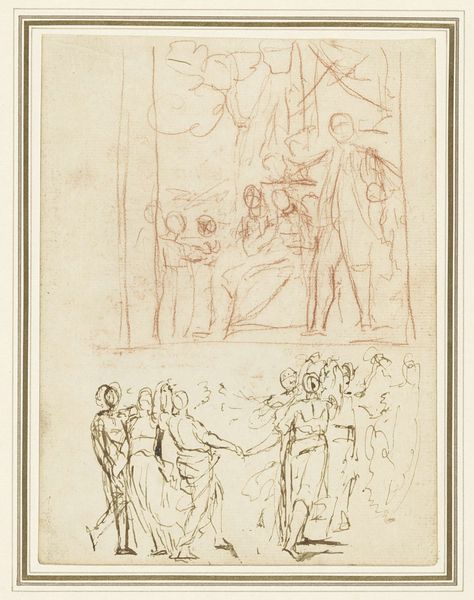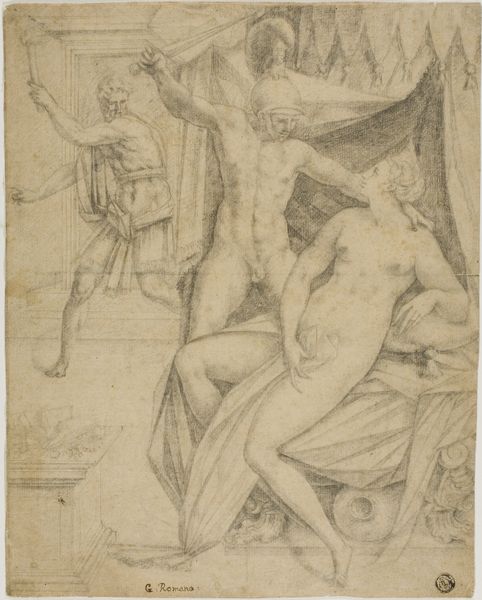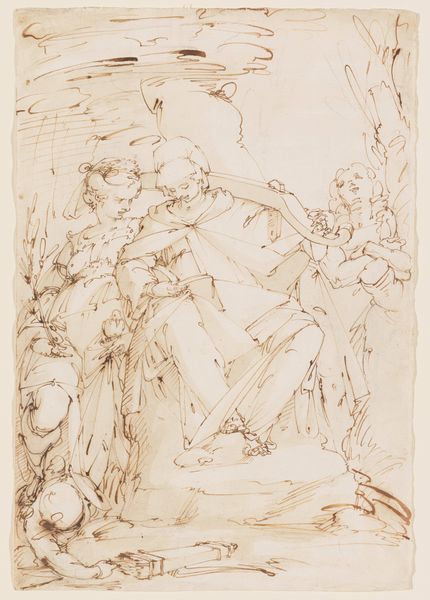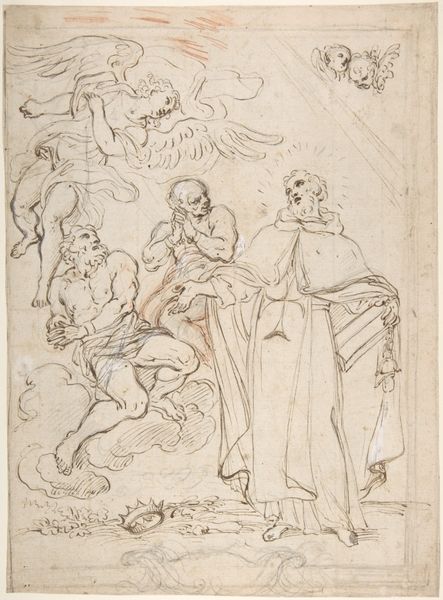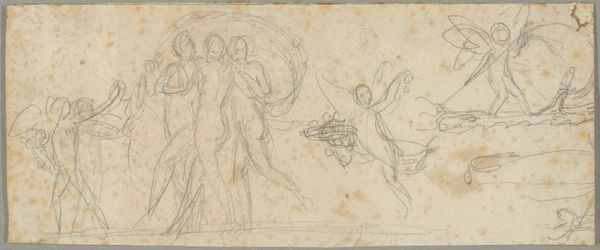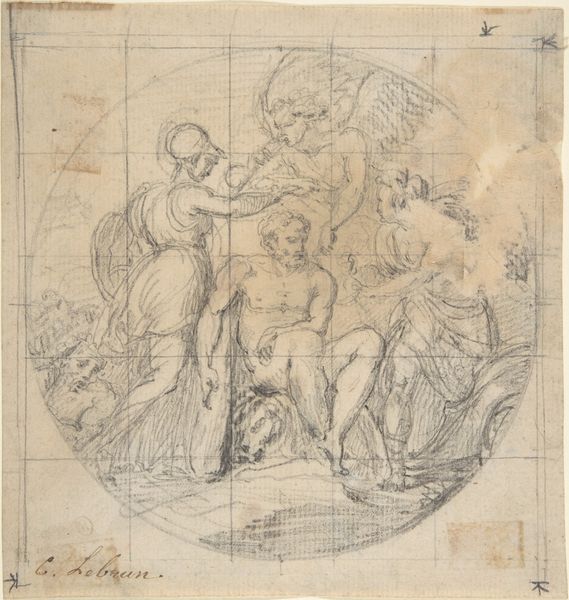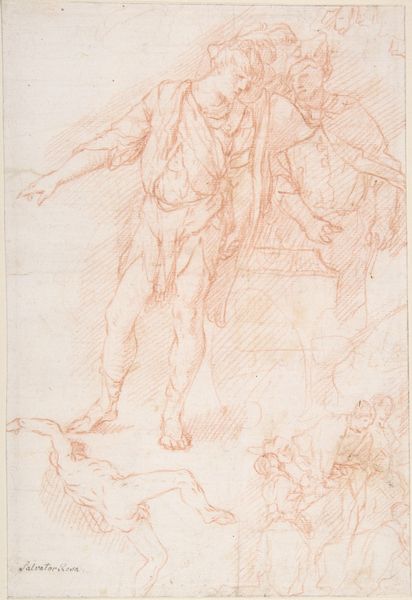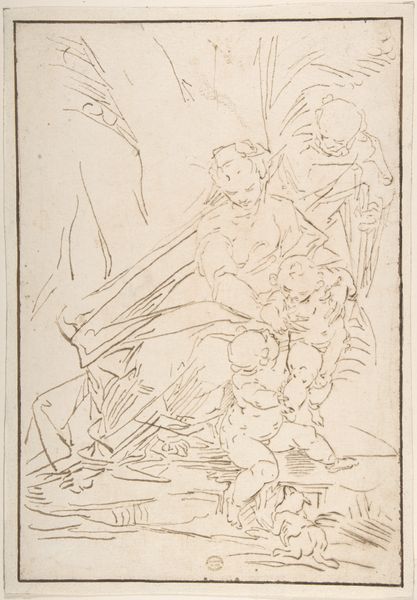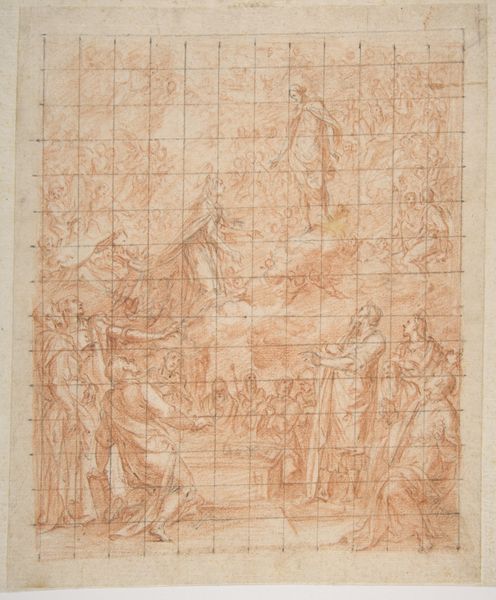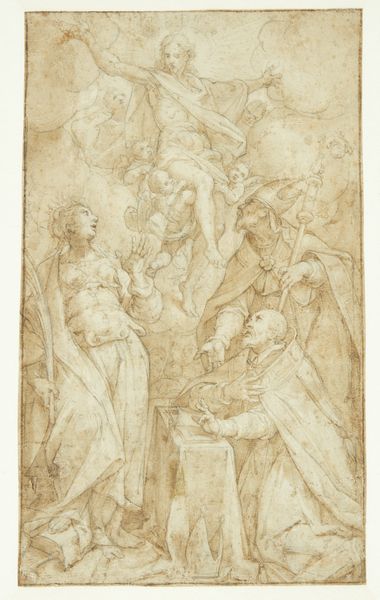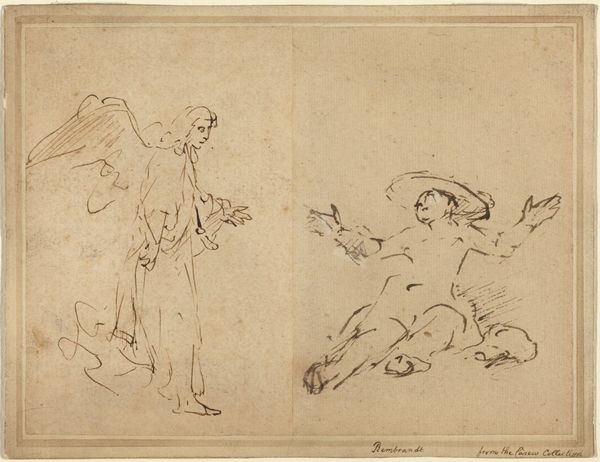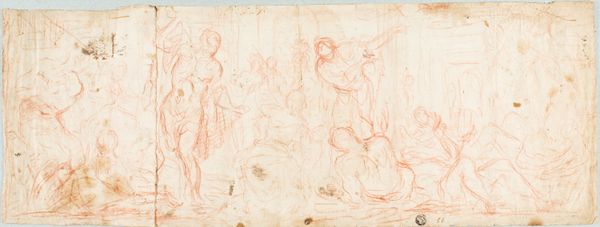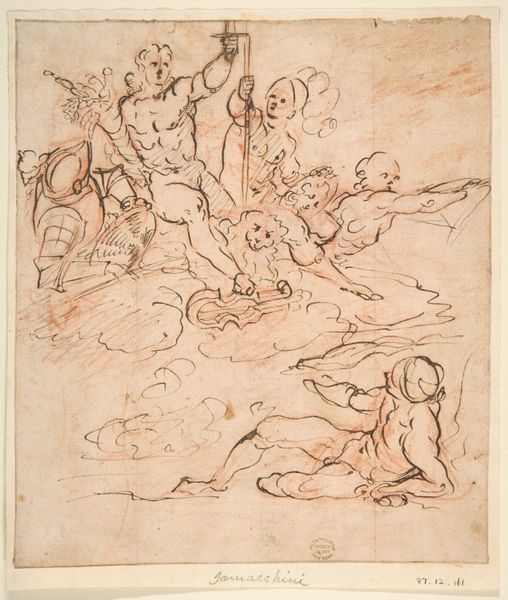
drawing, pencil, charcoal
#
drawing
#
charcoal drawing
#
figuration
#
11_renaissance
#
pencil
#
charcoal
#
history-painting
#
italian-renaissance
Dimensions: 12 13/16 x 10 5/16 in. (32.54 x 26.19 cm) (outer frame)7 3/16 x 4 3/16 in. (18.26 x 10.64 cm) (sight)
Copyright: Public Domain
Curator: The raw intensity of this sketch by Francesco Vanni, created between 1600 and 1606, really strikes you at first glance, doesn't it? It's titled *Christ Stripped of His Garments*. The work is on display here at the Minneapolis Institute of Art. Editor: The immediate sense I get is vulnerability. It's this underdrawing quality combined with a stark depiction of a man disrobed that makes it almost unbearably tender. It also exposes an unseen aspect to devotional art, the labour and making behind finished objects of devotion and reverence. Curator: Absolutely, the act of stripping itself is so symbolic. Looking through a postcolonial lens, it reflects themes of dehumanization and the brutal assertion of power. It's about the violation of personal space, the loss of dignity, and ultimately, the preparation for subjugation. Consider, how do those with power in contemporary culture use stripping of human rights and liberties to assert dominance? Editor: The rough pencil and charcoal lines feel raw, too, mimicking that brutal stripping. You can see the artist's process – the grid, the multiple attempts to capture the figures and how this method emphasises the constructed reality of the scene. Even in its preparatory form, it carries this weight of production; from graphite mining, to pigment preparation and ultimately devotional practice. The charcoal and pencil act as material witnesses here. Curator: Exactly. Vanni clearly situates this moment within a grander narrative. The drawing encapsulates complex historical narratives on power, the body and resistance and their convergence. What do you think he was aiming for, capturing the psychological undercurrent of that moment? Editor: I see someone grappling with depicting what cannot be depicted; faith, brutality, and humiliation. All using the readymade materials to hand. Pencil and paper become tools for understanding. Curator: I feel this resonates far beyond its initial religious context. Thank you for bringing such illuminating attention to the materiality within Vanni's statement. Editor: And thank you, too. Considering that context opens the drawing in a way I never expected.
Comments
minneapolisinstituteofart almost 2 years ago
⋮
Knighted by Pope Clement VIII, Francesco Vanni was arguably one of the leading artists of late 16th-century Italy. Overlooked for centuries, his importance and particularly his accomplished, prolific output as a draftsman, has only recently been appreciated again and attracted more scholarly attention. Vanni was an important figure in moving religious art away from the mannerism which had dominated the second-half of the 16th century, to a more naturalistic style, with new emotional force, simplified compositions, and greater dynamic impact. Such qualities would come to define early baroque art. Vanni's direct approach is evident in this compositional study, which depicts the Virgin Mary's emotional collapse when Christ is stripped of his garments before the Crucifixion.
Join the conversation
Join millions of artists and users on Artera today and experience the ultimate creative platform.
